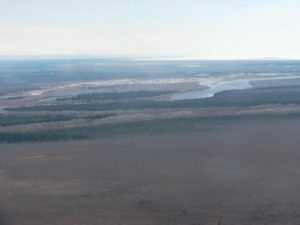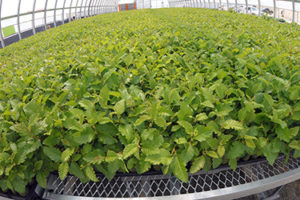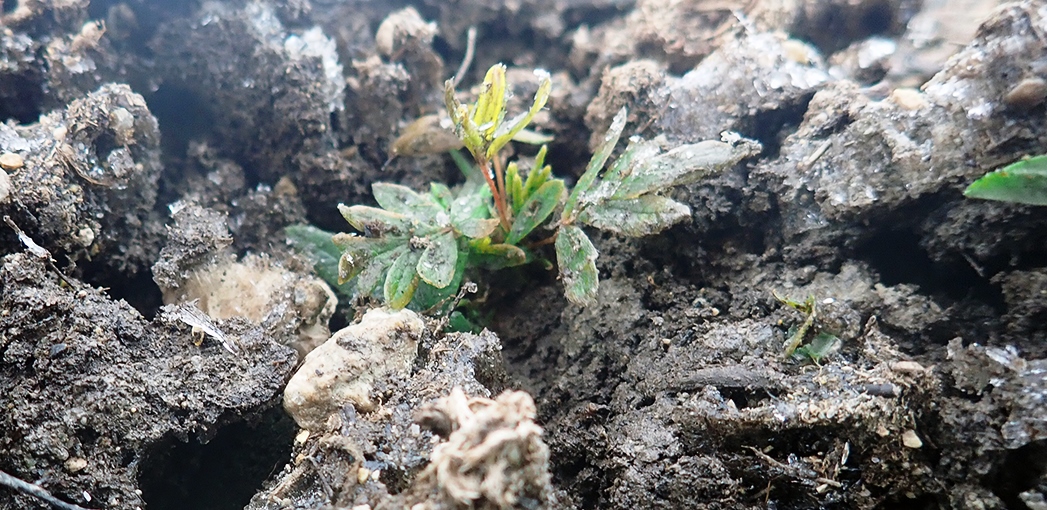The Victor Diamond Mine is the first diamond mine located in Ontario, Canada, and is De Beers‘ second diamond mine in Canada.
It’s located in the Northern Ontario “Ring of Fire”, in the James Bay Lowlands 90 kilometres (56 mi) west of Attawapiskat, in the remote northern part of the province.

Attawapiskat Settlement between Attawapiskat River and James Bay. Photo by Attawafn143 (aka. Brendan W.) via Wikipedia.
In June 2005, the Attawapiskat First Nation voted in favor (85.5%) of ratifying the Impact Benefit Agreement (IBA). Like a Community Benefit Agreement here in the U.S., the IBA is intended to ensure that local people benefit from corporate activities in their area, and/or or on their land.
By 2013-2014 royalties collected by the tribe from De Beers Victor Diamond Mine amounted to a grand total of $226. (Not surprising, considering the company’s reputation in South Africa.)
Construction of the mine began in February 2006, creating 3200 temporary jobs. Ongoing mining and operations created around 400 permanent positions. The Victor Mine is an open-pit mine, with a processing plant, workshops, and an airstrip located on site.
Looking at the brighter side, on December 11, 2018, De Beers reported that its Victor Mine had completed a successful 2018 reclamation program, with more than 430,000 seedlings planted.
Over 105,000 plants were grown on-site in a greenhouse and hydroponic seed starter “Crop Box” facility from seeds picked in the local area by Attawapiskat First Nation youth in 2017
The remaining 329,000 plants were brought in from off-site commercial local nurseries in Timmins and elsewhere using the local seeds that were harvested
 The team also collected 6.6 kilograms of local seeds over the past two months; about 5.6 million seeds collected around the Victor Mine area by reclamation technicians, Workforce North contractors and the Attawapiskat Labour Group.
The team also collected 6.6 kilograms of local seeds over the past two months; about 5.6 million seeds collected around the Victor Mine area by reclamation technicians, Workforce North contractors and the Attawapiskat Labour Group.
Species collected included Green and River Alder, Paper Birch, Fireweed, Yarrow and more.
The 2018 program cost approximately $8.4 million, with the bulk of the expenditure for the progressive earthworks program completed by Timmins-based Northec crew.
The program was designed to reshape the land to a natural contour, moving hundreds of tonnes of soil, muskeg and other material.
Throughout the coming winter, the earthworks team will continue to reshape areas around the mine for the 2019 reclamation-replanting program.
Since progressive reclamation began at Victor Mine in 2014, close to 600,000 trees and plants have gone into the ground.
Unless otherwise credited, all photos are courtesy of De Beers.

